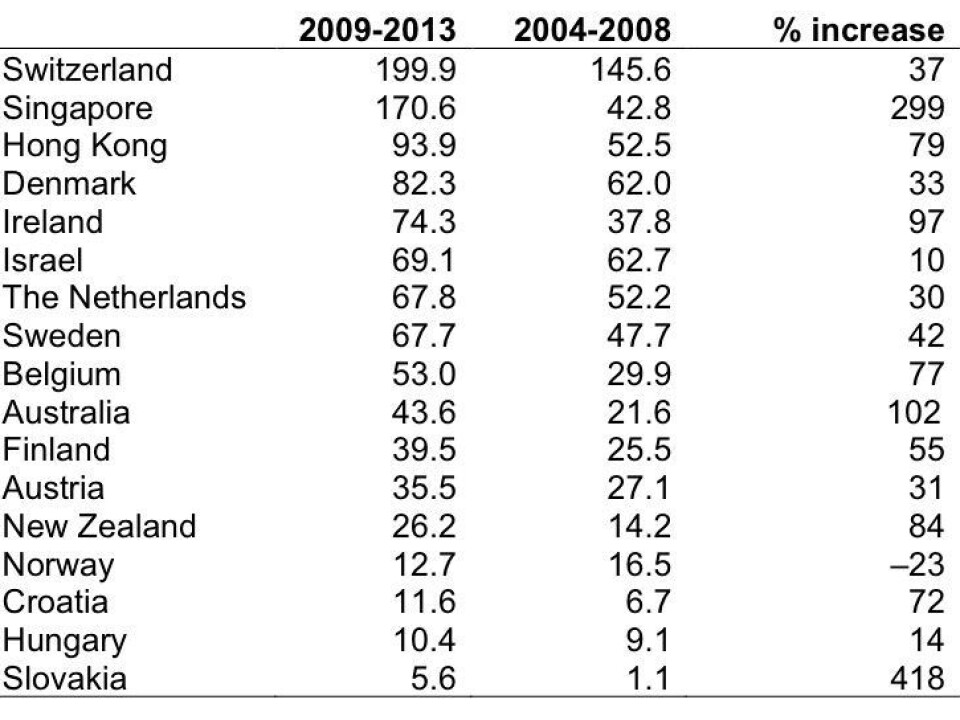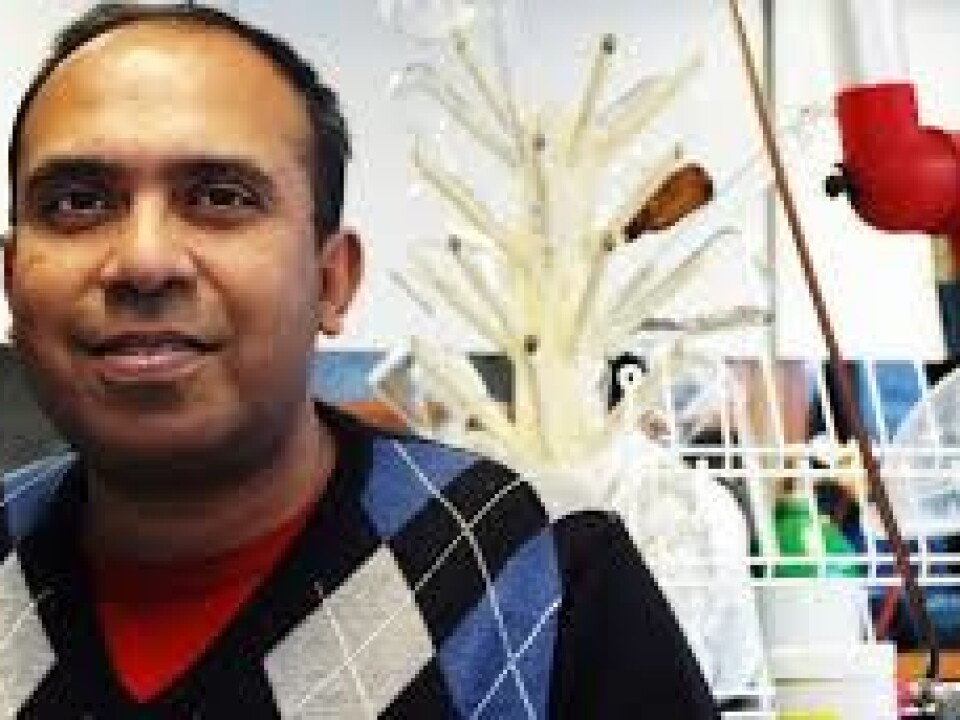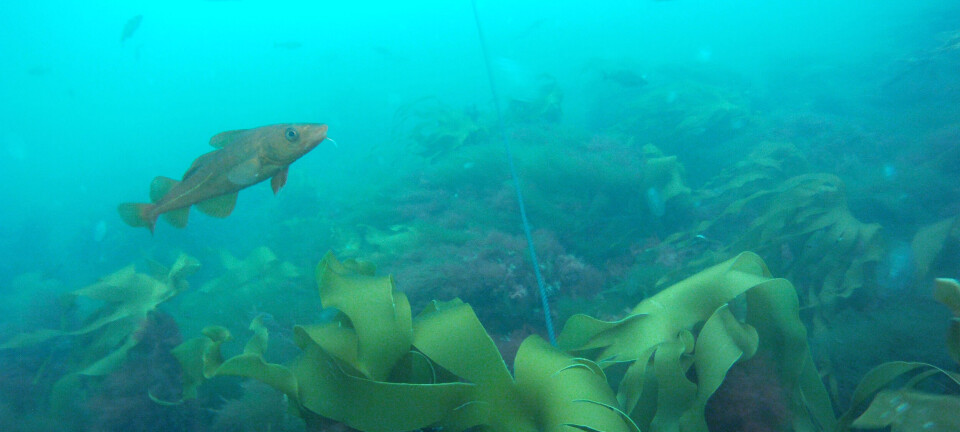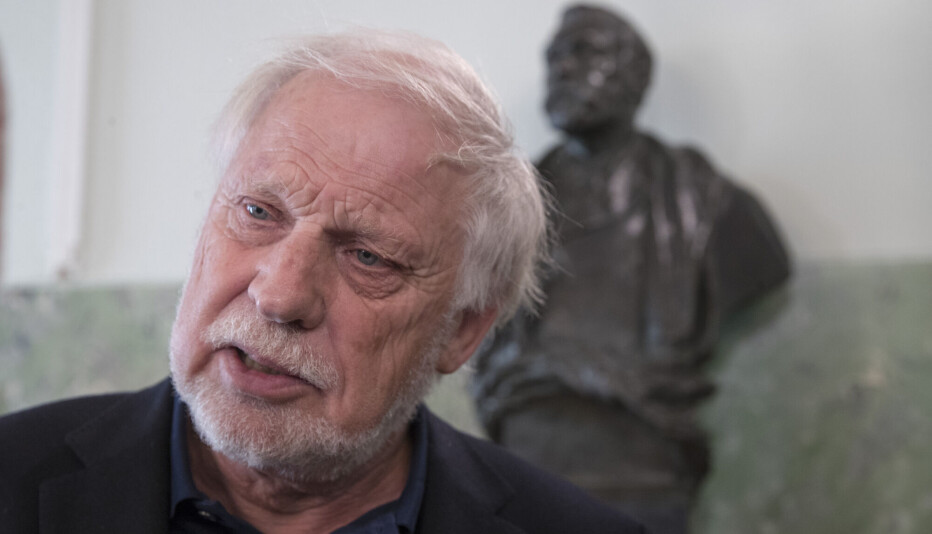
Is chemistry going backward in Norway?
OPINION: Governments come and go and, with each government, comes a new science policy in Norway, and a new buzzword. Yet, as I look at my own field – chemistry, a major area of science – there seems to have been scant progress over the last two decades.
Denne artikkelen er over ti år gammel og kan inneholde utdatert informasjon.
Given that five years have passed since the Research Council of Norway commissioned the last major evaluation of chemistry in Norway (the so-called Hey-Hawkins report), this is a good time to take stock of our performance.
In this brief study, I carried out a survey of publications in leading broad-interest chemistry journals originating from some of the smaller OECD countries and advanced economies for the five-year periods 2004-2008 and 2009-2013. The results, quoted per million inhabitants (based on 2013 populations), are given in Table 1.
The results provide a stark indication of meager productivity of chemists in Norway, not only in relation to other Nordic countries, but also relative to the majority of OECD countries. A stunning finding (alluded to in the title of this story) from Table 1 is that, from 2004-2008 to 2009-2013, Norway’s output in these broad-interest chemistry journals has actually declined by about 23 percent!
Admittedly, this is a somewhat elitist survey: six leading journals certainly do not capture the breadth of chemistry research in any country. Nevertheless, given that the journals chosen publish basic research from all areas of chemistry, I do believe that this analysis gives a qualitatively correct picture of the relative standings of the nations surveyed vis-à-vis chemistry.

Although space considerations prevent me from tabulating the data, similar analyses for more specialized regimes such as organic chemistry or materials science also place Norway unfavorably vis-à-vis many other OECD nations.
It is easy to dismiss the problem by saying that Norway is an expensive country and a given sum of money doesn’t buy as much in Norway as it does in the USA. That, however, doesn’t explain the difference in productivity between Norway and its Nordic neighbors, which are also comparably expensive.
What accounts for this dismal state of affairs? Causation is hard to pin down but there appear to be a host of contributory factors: a poor school system; faculty hirings tainted by cronyism; lack of a performance-based culture; suppression of individual creativity and an emphasis on groupthink. While the other points are regularly highlighted in the press, the last two points may be worth some elaboration.
It’s widely recognized among science administrators in most countries that the most reliable indicator of a scientist’s future success and creativity is his or her prior track record. That is why, for example, many successful American scientists have been supported life-long by a ‘single’ grant (from institutions such as the National Science Foundation or the National Institutes of Health) that is periodically renewed, subject of course to rigorous review of progress and future plans. In Britain and many Commonwealth countries, scientists are also individually graded and thus are officially ranked anywhere from world-class to research-inactive; the grade then determines to a significant extent the research funding they receive.

In Norway, my observation is that grant-writing often involves making dramatic claims that routinely fail to translate into impressive discoveries and papers. I should hasten to add that this statement in no way reflects any form of personal bitterness: I am grateful for a reasonable level of research funding, derived from both national and local sources. A far greater emphasis on track record is called for at both the local and national levels in Norway, in my opinion.
Another development that has gone significantly awry in recent years is the requirement that researchers organize themselves into ‘larger constellations’. Sadly, far too many of these constellations produce less than stellar research (as evidenced by publications in leading journals) in relation to the funding they enjoy. Instead, they seem to attract significant numbers of mediocre hangers-on seeking safety in numbers.
My two crowns worth of remedies then are as follows: fix the school system; value and promote talent; root out cronyism in faculty hirings; hire people that expand and modernize the antiquated profiles of science departments and organizations; encourage individual creativity via greatly expanded FRIPRO (the standard program for blue-skies research), YFF (outstanding younger researcher) and ‘toppforsker’ (leading researcher) programs; reward track record, identify high-flyers and help them reach their full potential.
Finally, a word about my motivation may be appropriate. My goal is neither to point fingers nor to create a controversy. It is simply profoundly disappointing that the last years have not seen more of an improvement in Norwegian chemistry relative to the previous five years. I look forward to seeing policies that will rectify Norway’s low standing in Table 1.

































